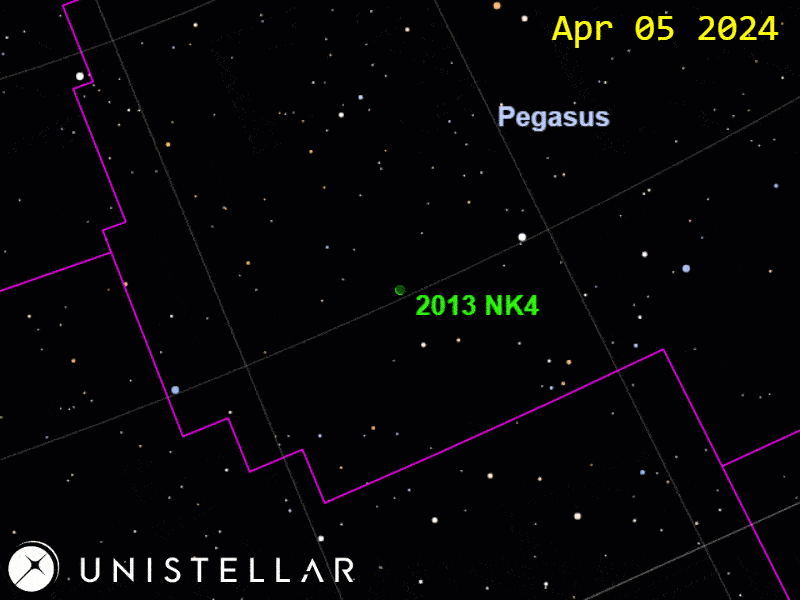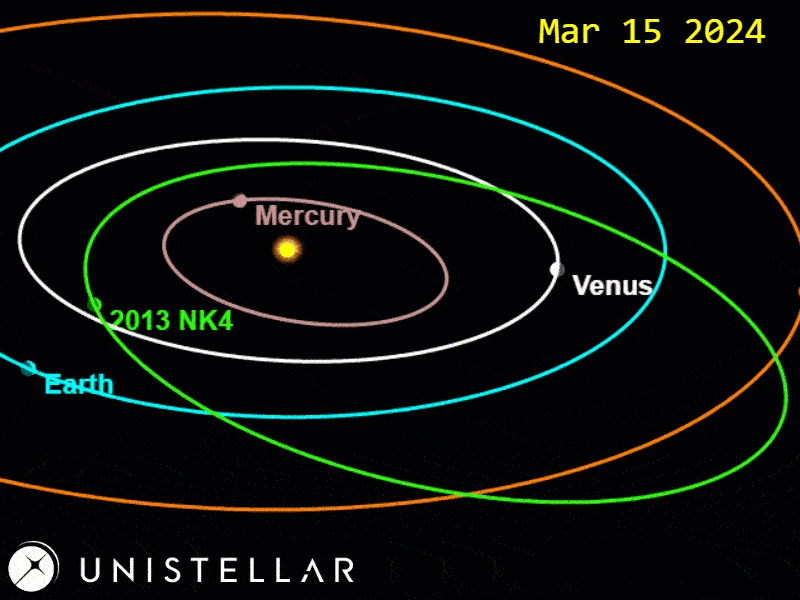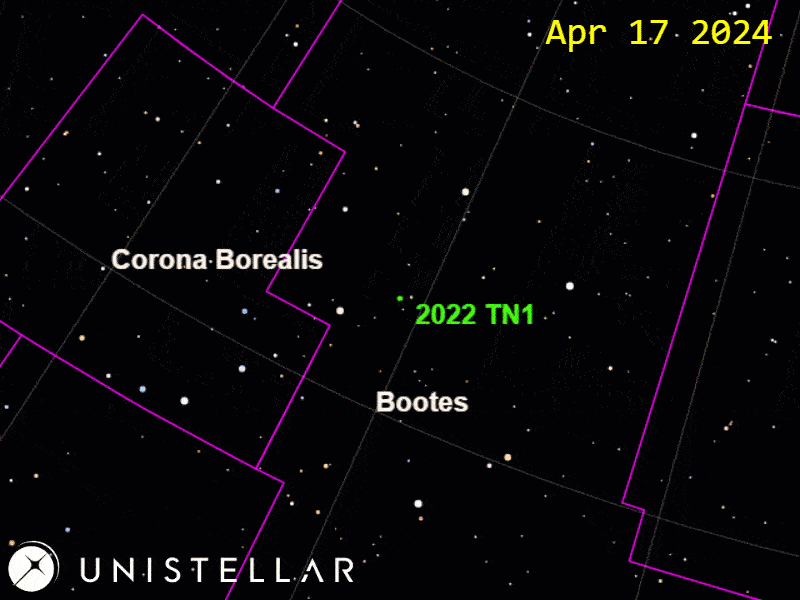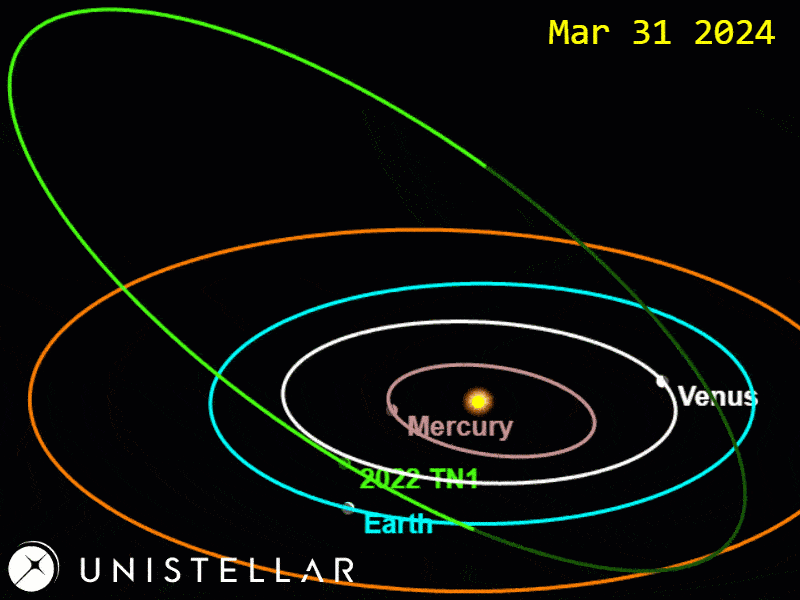Planetary Defense
Missions
Find up-to-the-minute visibilities and deeplinks for Planetary Defense targets on the Moving Target Ephemeris page.
MISSION 439437 (2013 NK4)
On April 15th the near-Earth asteroid 2013 NK4 is predicted to come within 9 lunar distances of Earth. Based on its brightness, 2013 NK4 is predicted to have a diameter somewhere between 400 and 1000 meters, meaning it would cause extreme local devastation with potentially global effects on the climate if it were to impact Earth. Luckily, it doesn’t seem like we’re in any danger of an impact from 2013 NK4 within at least the next century, but close approach events like this are the best way to update the asteroid orbit so we can be prepared in case anything changes. 2013 NK4 will be visible worldwide starting April 13th all the way through April 30th.
To observe your target:
Follow the HowTo Guide for A. The target is in the Unistellar app’s database.
Use the following observation parameters:
Record Duration: 40 minutes
Exposure time: 4 seconds
Gain: 25 dB
The target is also available on the Moving Target Ephemeris webpage.
Only one observation is needed.


MISSION 2022 TN1
On April 30th, asteroid 2022 TN1 is predicted to come within 20 lunar distances of Earth. 2022 TN1 is estimated to have a diameter between 230 and 500 meters, meaning it would cause significant regional damage if an impact were to occur. By observing it during the close approach we can get a precise measurement of its orbit. 2022 TN1 will be visible worldwide between April 26th and May 2nd.
To observe your target:
Follow the HowTo Guide for B. The target is not in the Unistellar app’s database.
Use the following observation parameters:
Record Duration: 40 minutes
Exposure time: 4 seconds
Gain: 25 dB
The target is available on the Moving Target Ephemeris webpage.
Only one observation is needed.


NEW HERE?
Head to our Tutorial for guidance on how to master your Unistellar telescope to become a Planetary Guardian. If you have any questions please contact us at citizenscience@unistellaroptics.com.
